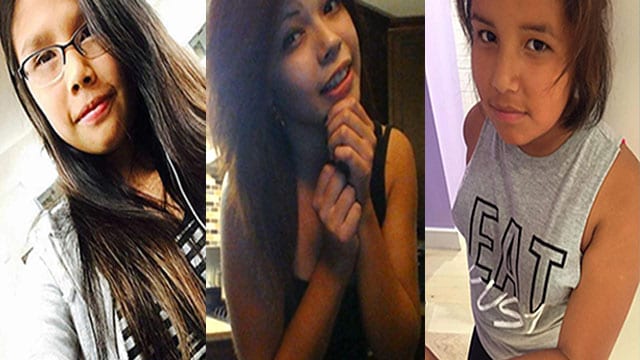
Kanina Sue Turtle, left, Courtney Scott and Amy Owen all died within six months of each other while living in Ontario group homes between October 2016 and April 2017. They were just a few of the Indigenous children placed in care at the time.
When the Ontario government passed new legislation on child welfare last year it required that the province’s 49 children’s aid societies start collecting race-based data for the first time.
That collection was to begin Feb. 5 and as APTN News reported last week not a single society has submitted any statistics to the ministry of Children and Youth Services.
Turns out there are a number of reasons for this and perhaps the most important is the province never required societies to actually submit the data.
“Despite the policy directive and requirement to collect the data, which Children’s Aid Societies are fulfilling, there is no requirement to report data to the Ministry,” said Sean McGrady, a spokesperson for the Ontario Association of Children’s Aid Societies in an email to APTN Friday.
McGrady did say the societies are collecting the data as required under the legislation.
Related: Three First Nations girls died in Ontario group homes in last 6 months
This new data collection was touted by the previous Liberal government, in fact the former minister, Michael Coteau, came on APTN’s Nation to Nation in February and said it was the “most comprehensive piece of legislation” for child protection.
“We know it will allow us to make better decisions,” Coteau said of the data collection.
But he failed to mention there was no requirement to submit it.
He also said a network, that was first developed several years ago, would allow societies to submit the data.
Turns out that network, known as the Child Protection Information Network (CPIN), lacks certain functions and not all societies are using it all these years later according to McGrady.
“CPIN does not currently have the ability to produce a report on the race-based data being collected by Children’s Aid Societies. We are eager for the Ministry to create this reporting function,” said McGrady.
“Children’s Aid Societies want to begin analyzing the data to enhance their response and services to diverse communities.”
While McGrady answered questions almost immediately, APTN had a difficult time getting responses from the ministry.
In fact, it’s common to wait days for an answer to a single question.
On Friday, before McGrady had contacted APTN, the ministry responded to previous questions pertaining to why the ministry wasn’t requiring the societies to submit the data. (At that point APTN didn’t know there was no requirement).
“The ministry expects to review the initial data collected in early 2019,” said spokesperson Trell Huether in an email.
But the ministry also said of the 49 societies just 30 were using the network.
APTN asked why that was the case.
“By 2020, all non-Indigenous societies are expected to be on the Child Protection Information Network,” said Huether. “Societies not yet on the Child Protection Information Network are to start collecting this data once they “go live” on the network.”
See also: Ojibway teen sleeping in Ottawa mall stairwell after aging out of group home
The remaining societies are Indigenous, that are mandated by the province.
“The ministry is in discussions with Indigenous partners to develop a plan with respect to the Child Protection Information Network,” said Huether.
APTN followed up asking why, if the legislation requires data collection, why wasn’t it mandatory for the societies to submit the data.
There hasn’t been an response, other than the ministry is working on an answer.
Meanwhile, McGrady said Wednesday the societies are working with the province.
“Although the timing for the first report to the Ministry is under discussion, the plan is for reporting to the Ministry to be done on a quarterly basis in the future,” he said.
In depth: Child welfare agency suspected First Nations girls were planning suicides
Ontario has never tracked the kids in child protective services by race and recent statistics put the total number of kids in care at about 14,500 by the Ontario Association of Children’s Aid Societies.
But that number in tallied from 41 of the societies. It’s not a complete picture of the total amount, regardless of race.
So where is the starting point? How do you fund culturally appropriate programs for Indigenous kids if you don’t know where they are?
Those are questions the office of the Ontario Child Advocate has been asking for many years.
“Any of these regulations for this new legislation and any of the policies following through for children and youth in the province have to be done based on knowing who the kids are, knowing where the kids are, knowing what conditions those kids are in,” Trevor McAlmont, director of advocacy services with the Child Advocate, said last week.
The Child Advocate is an independent office that is directed to look out for the best interests of children in care.
“So if we don’t know that and we don’t start there then it’s problematic,” McAlmont said.
As for there being no requirement to submit the data, a spokesperson for the Child Advocate said they were unaware.
APTN continues to wait for the ministry to respond to additional questions.









